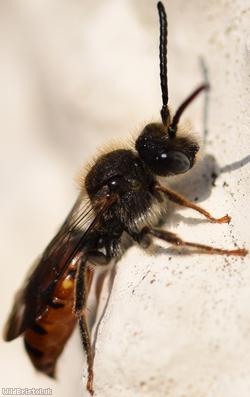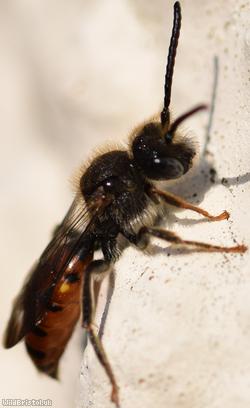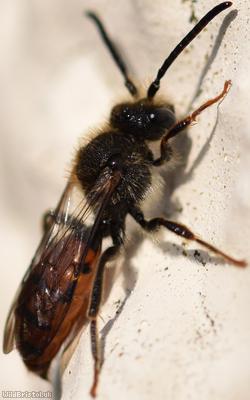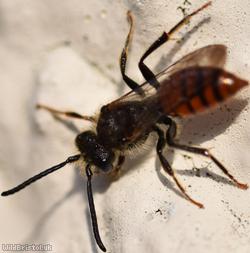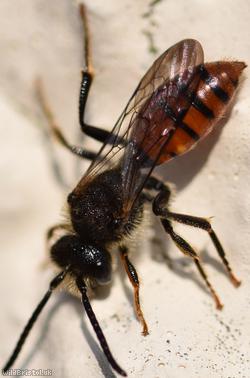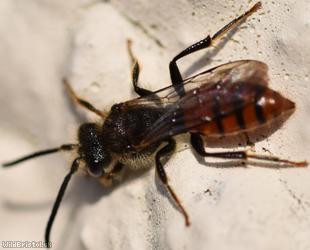Fabricius' Nomad Bee - Nomada fabriciana
Favourite Photos
Species Description
Widespread and locally common in the Southern half of the UK, being scattered and rare in the North. Habitat includes: Anywhere with the host and a good nectar supply such as gardens, parks, allotments, churchyards, meadows, coasts, roadside verges, field margins, wasteland, old quarries etc. Life story: A cleptoparasitic species of various Mining Bees (mainly Andrena bicolor - Gwynne's Mining Bee). Diet: Does not collect pollen but nectars from Bogbean (Menyanthes trifoliata), Dandelions (Taraxacum sp.), Daisy (Bellis perennis), Common Ragwort (Senecio jacobaea), Field Scabious (Knautia arvensis), Speedwells (Veronica sp.), Spurge's (Euphorbia sp.), Stitchworts (Stellaria sp.), Strawberry (Fagaria vesca), Willows (Salix sp.). Flight period: Bivoltine (March to June, June to August) being most numerous in the first generation. Hosts: A. bicolor (Gwynne's Mining Bee), A. nigroaenea (Buffish Mining Bee), A. angustior (Groove-faced Mining Bee), A. flavipes (Yellow-legged Mining Bee), A. varians (Blackthorn Mining Bee), A. chrysosceles (Hawthorn Mining Bee). Specimens Nomad Bees vary greatly in size, due to the different host species utilised. The largest individuals may develop in the nests of A. nigroaenea (Buffish Mining Bee).
ID:
Black labrum and bifid mandibles
Females have antennal flagella which are usually orange with a broad black band and orange tip (only otherwise seen in female N. armata and sometimes N. zonata), but are occasionally all black or virtually all orange. Females usually have small yellow spots at the sides of tergite 2 and ill-defined black bands across tergite 3 and 4, though the abdomen can be entirely red without yellow spots or have dark bands in some. The legs vary from extensively reddish to almost entirely black.
Males resemble Females but have black antennal flagella and often have yellow spots on tergites 2 and 3.
Useful Links:
